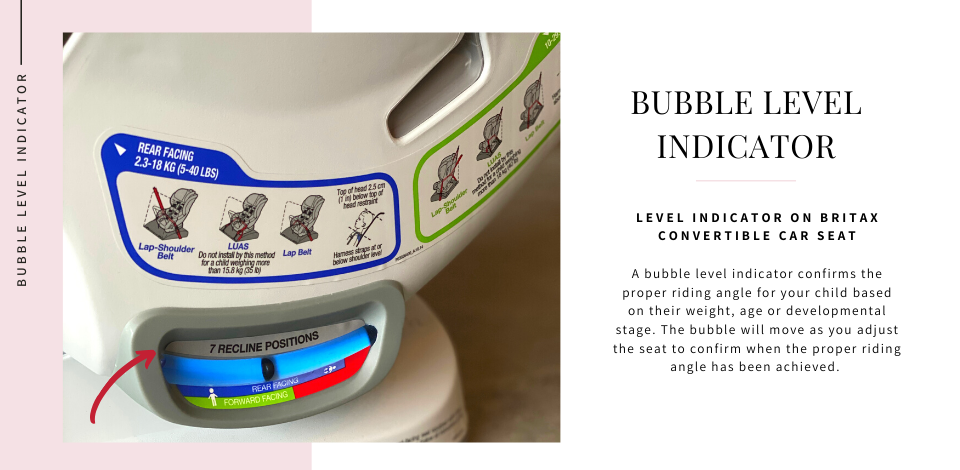Car Seat Terms Explained
Jump to Section
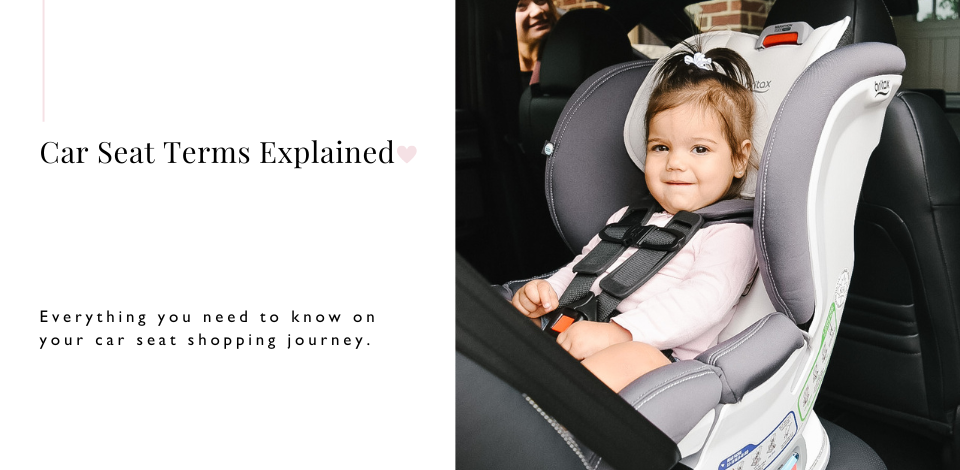
We get it! You started shopping for a car seat only to find out you don't know what half the terms actually mean. Don't worry, you are not alone!
So sit back and relax, this is car seat terms 101.
Uas – Universal Anchorage System
[also known as LATCH in the United States or ISOFIX in Europe]
The alternate method [to the seatbelt] of installing child restraints. All child restraint systems sold in Canada MUST be able to be installed by either the seatbelt or the UAS system. UAS has been standard in all passenger vehicles in Canada since September 2002.
Rigid Latches
Rigid UAS lower connectors are at a fixed width to match the required spacing of lower anchors in vehicles – 11" - and are affixed to the seats structure.
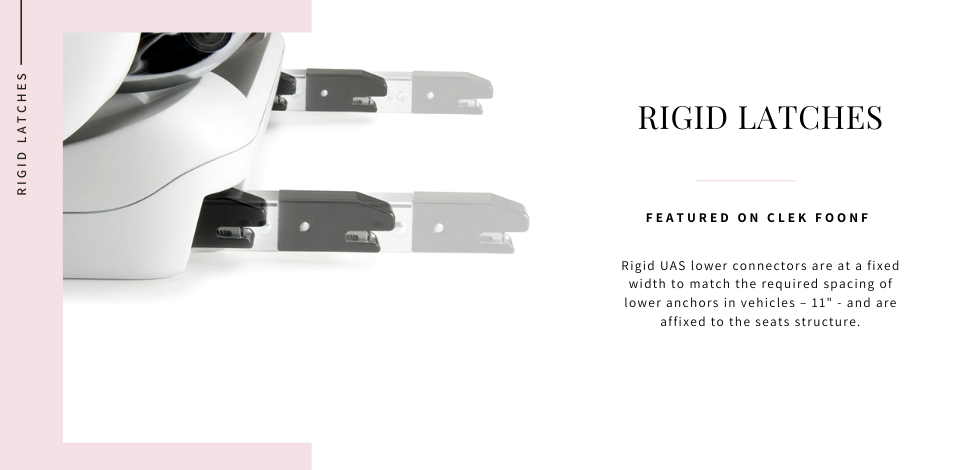
Top Tether
All forward-facing harnessed child restraints in Canada require the use of a top tether. A top tether reduces the amount a child’s head can move forward in a crash, significantly limiting the risk of injury. In Canada, there are no vehicles that currently permit a rear-facing tether that connects to an anchor point on the floor of the vehicle.
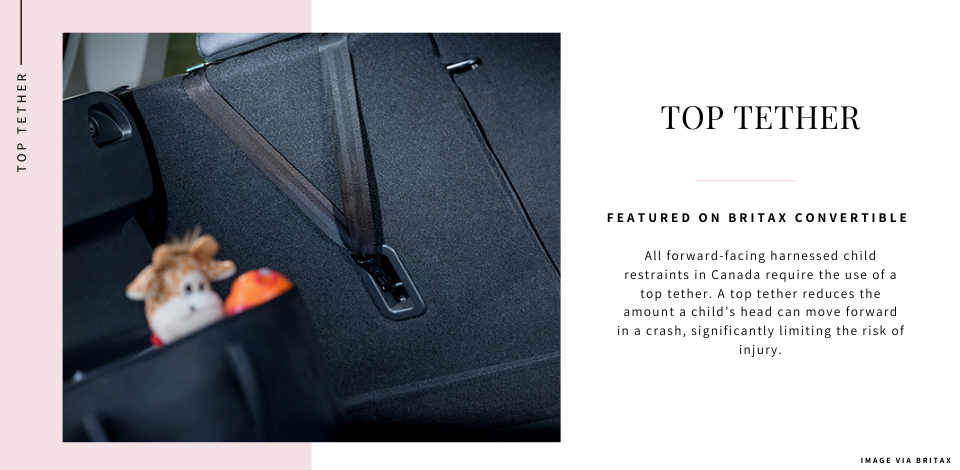
No Re-Thread Harness
Adjustment of the headrest adjusts the position of the harness height in order to avoid unthreading the harness from the back of the seat and manually inserting the straps into a higher or lower harness slot as child grows.
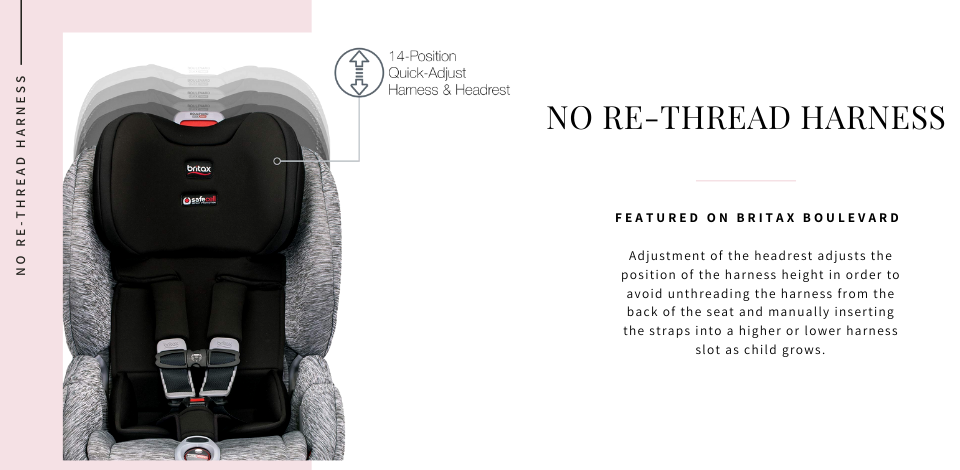
Locking Clip
A locking clip fixes the lap portion of the lap/shoulder belt to the length needed to tightly secure the child restraint to the vehicle. A locking clip must be placed within 1” of the latch plate and both the lap and shoulder belt must be properly routed through all four prongs of the locking clip. Locking clips can be used if a secure install cannot be achieved with any other form of lock-off & can generally be ordered through the child restraint manufacturer. Some child restraints come with a locking clip if it is often required for that seat.
Anti-rebound Bar
Car seats in Canada are tested based on a frontal impact collision. When a collision occurs, the child restraint rotates towards the front of the vehicle, then when the child restraint rebounds towards the back of the car, the anti-rebound bar catches on the seat back to reduce the intensity of that rebound and reduce injury.
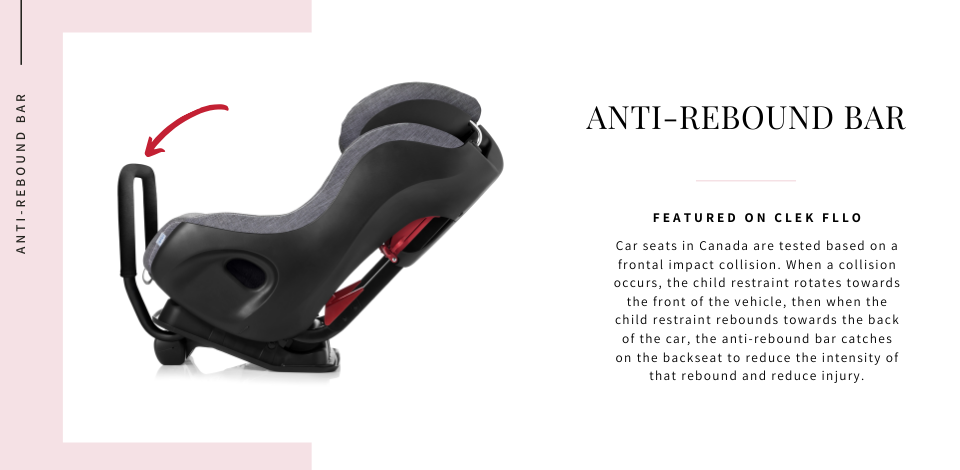
Load Leg
Load legs are available only on rear-facing car seats and they are attached to the base of the seat rather than the carrier portion. The load leg reduces the initial movement towards the point of impact [frontal collision], which in turn, reduces the amount of rebound as the crash continues.
To learn more about load legs, check out out in-depth learning centre article here.
5-Point Harness
A 5-point harness refers to the number of straps that secure a child to their child restraint or stroller. 2 straps over the child’s shoulders, 2 straps over the child’s hips, and 1 strap at the child’s crotch.
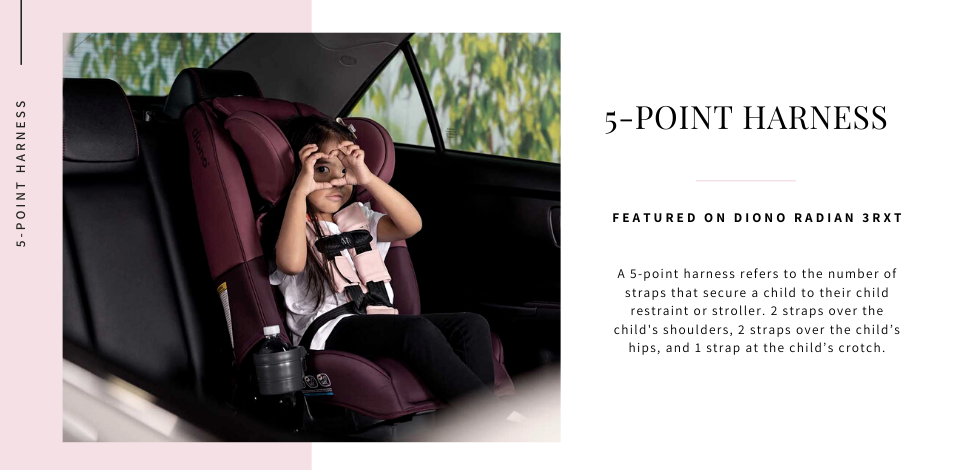
Chest Clip
A chest clip is a pre-crash positioner located on child restraints. The purpose of the chest clip is to properly position the harness on the child’s shoulders. If a chest clip is present on a child restraint it must be used properly. The middle of the chest clip should be lined up to the child’s armpits.
Switchable Elr/Alr Retractors:
Retractor can be switched from Emergency Locking Retractor [ELR] to Automatic Locking Retractor [ALR]. The latter is required in order to properly install your child restraint using the vehicle’s seatbelt retractor. In order to determine if your vehicle is equipped with an Automatic Locking Retractor
- Slowly pull the seatbelt all the way out in a straight line [pulling too quickly can engage the Emergency Locking Retractor]
- Let it back in several inches. If it has been switched to ALR mode, it will make a ratchetting sound as it retracts, and you will not be able to pull more belt out.
- If, once you have pulled the belt out all the way, the seatbelt still moves freely in and out of the retractor then it is not a switchable retractor and cannot be used to lock your belt and secure your child restraint.
Lock-off
In order for all child restraints to be properly installed using a vehicle seat belt, the lap portion of the vehicle belt must be secure and unable to loosen. There are multiple ways to do this, including using a Locking Clip, using your Vehicle seat belt retractor or purchasing a car seat with a built in lock-off. All vehicles have different methods of locking the seatbelt, the most common being with a Switchable Emergency Locking Retractor/Automatic Locking Retractor [ELR/ALR]. Always reference your vehicle manual to determine if your vehicle is compatible with your child restraint.
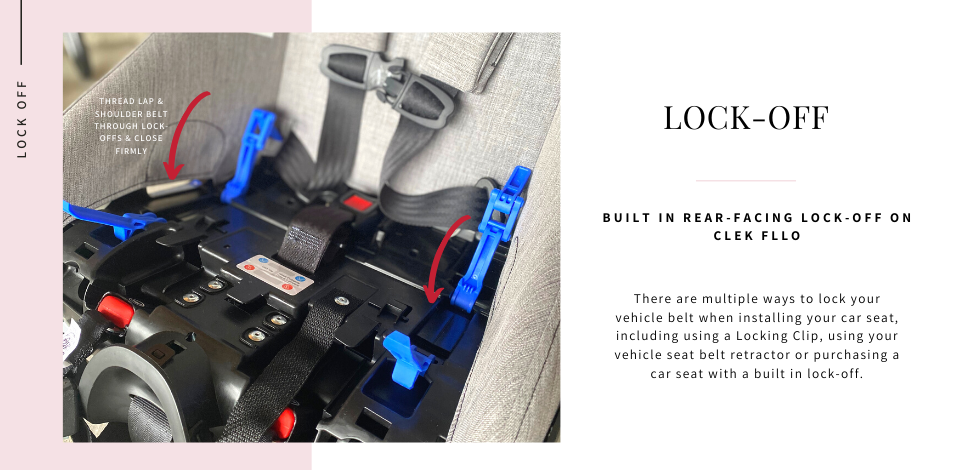
Sip – Side Impact Protection
Child restraints are currently tested in Canada based on a frontal impact collision [the most common type of crash], so there is no standard for Side Impact Protection and all child restraint manufacturers have their own methods to protect a child in a side impact collision [ex. A t-bone].
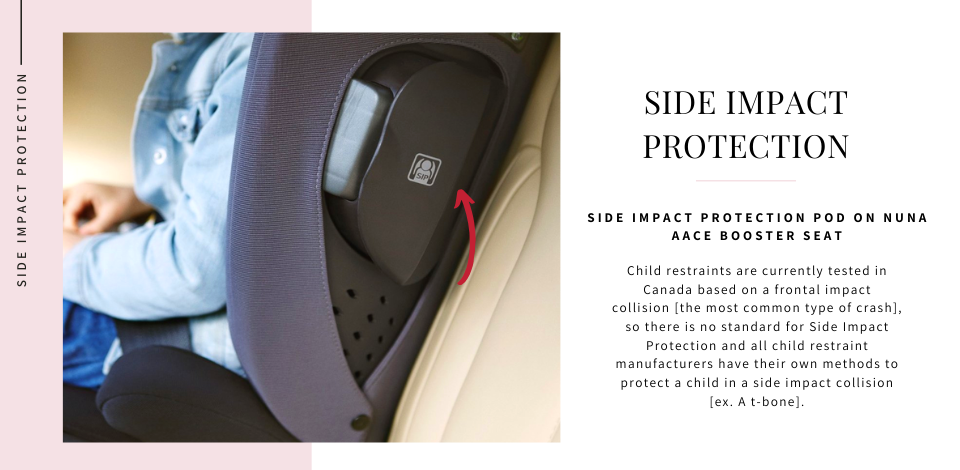
Bubble-Level Indicator
A bubble-level indicator confirms the proper riding angle for your child based on their weight, age or developmental stage. The bubble will move as you adjust the seat to confirm when the proper riding angle has been achieved. A younger baby should have a recline angle of ~45 degrees, then when a child has developed more neck strength and is able to hold their head up on their own, they can sit at a more upright angle. All child restraints have different angle specifications so always reference your manual.
